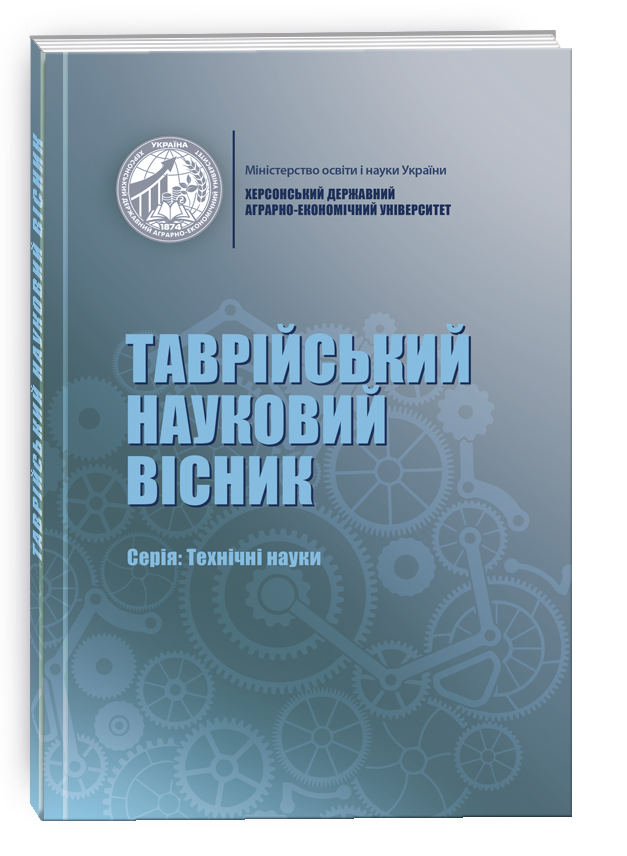MARKET ANALYSIS AND PROSPECTS FOR EXTENDED GLUTEN-FREE PRODUCTS
DOI:
https://doi.org/10.32851/tnv-tech.2023.1.6Keywords:
cialis, gluten-free products, assortment, hidden gluten, gluten.Abstract
Constant stress, nervous and emotional tension, reduced physical activity, unhealthy environmental conditions, and many other factors have a negative impact on health. As a result, prolonged stress leads to the rapid development of various diseases. Therefore, providing different population groups with quality food products is one of the prerequisites for a strategic national priority. Analyzing recent studies, the increased popularity of gluten-free diets has been revealed, which is associated not only with gluten intolerance or food sensitivity, but also with modern fashion trends. The purpose of this paper is to review the important issues in adhering to a strict gluten-free diet, to study the range of gluten-free products and the prospects for their expansion based on domestic raw materials. It has been established that many products contain "hidden" gluten, which negatively affects the health of celiac patients. Therefore, it is important to investigate the sources of gluten contamination in food. Such products may include sweets, canned foods, dry soups, broth cubes, seafood, crab sticks, sauces, ketchups, meat gravy, mayonnaise, ice cream, yogurt, etc. Market research on gluten-free products has shown the dominance of foreign manufacturers, which are much more expensive than their domestic counterparts. It is worth noting that Ukraine has the AEOCS standard in place, but there are only a few manufacturers that adhere to it. Therefore, given the growing demand, there is a need to produce domestic gluten-free products and expand the range of dishes and their availability in both retail and restaurant establishments for the normal functioning of society. Therefore, the systematization and application of certification of existing production facilities to provide consumers with quality and safe products are promising areas.
References
Demirkesen, I., Ozkaya, B. Recent strategies for tackling the problems in gluten- free diet and products. Critical Reviews in Food Science and Nutrition, 2022, 62(3), 571–597.
Reilly, N.R. The Gluten-Free Diet: Recognizing Fact, Fiction, and Fad. The Journal of Pediatrics, 2016, 175, рр. 206–210.
Melini, V., Melini, F. Gluten-free diet: Gaps and needs for a healthier diet. Nutrients, 2019. 11(1), 170.
Diez-Sampedro, A., Olenick, M., Maltseva, T., Flowers, M. A gluten-free diet, not an appropriate choice without a medical diagnosis. Journal of nutrition and metabolism, 2019. р. 2019.
B. Niland and B. D. Cash. Health benefits and adverse effects of a gluten-free diet in non-celiac disease patients, Gastroenterology & Hepatology, 2018, .vol. 14, no. 2, pp. 82–91.
R. W. Y. Lee, M. J. Corley, A. Pang et al. A modified ketogenic gluten-free diet with MCT improves behavior in children with autism spectrum disorder, Physiology & Behavior, 2018. vol. 188, pp. 205–211.
Aljada, B., Zohni, A., El-Matary, W. The gluten-free diet for celiac disease and beyond. Nutrients, 2021, 13(11), 3993.
Caio G, Volta U, Sapone A, Leffler DA, De Giorgio R, Catassi C, et al. Celiac disease: a comprehensive current review. BMC Med., 2019. р. 17.
Azani M, Badfar G, Abangah G, Mahmoudi L Celiac disease in Iranian irritable bowel syndrome patients; a systematic review and meta-analysis. Gastroenterol Hepatol Bed Bench. 2019. 12:85–97.
Yoosuf S, Makharia GK. Evolving therapy for Celiac disease. Front Pediatr. 2019. 7:193.
Catassi C, Ratsch IM, Fabiani E, Rossini M, Bordicchia F, Candela F, Coppa GV, Giorgi PL. Coeliac disease in the year 2000: exploring the iceberg. Lancet. 1994;343:200–3.
Samasca G, Lerner A, Girbovan A, Sur G, Lupan I, Makovicky P, et al. Challenges in gluten-free diet in coeliac disease: Prague consensus. Eur J Clin Invest. 2017;47:394–7.
Demirkesen, I., & Ozkaya, B. Recent strategies for tackling the problems in gluten- free diet and products. Critical Reviews in Food Science and Nutrition, 2022. 62(3), 571–597.
Xu, J., Zhang, Y., Wang, W., Li, Y. Advanced properties of gluten-free cookies, cakes, and crackers: A review. Trends in Food Science & Technology, 2020. 103, 200–213.
Zhang, X., Dong, C., Hu, Y., Gao, M., Luan, G. Zein as a structural protein in gluten-free systems: An overview. Food Science and Human Wellness, 2021. 10(3), 270–277.
Cela, N., Condelli, N., Caruso, M. C., Perretti, G., Di Cairano, M., Tolve, R., Galgano, F. Gluten-free brewing: Issues and perspectives. Fermentation, 2020. 6(2), 53.
Wieser, H., Segura, V., Ruiz-Carnicer, Á., Sousa, C., Comino, I. Food safety and cross-contamination of gluten-free products: A narrative review. Nutrients, 2021. 13(7), 2244.
Quan, L., Xu, X., Cui, Y., Han, H., Hendren, R. L., Zhao, L., You, X. A systematic review and meta-analysis of the benefits of a gluten-free diet and/or caseinfree diet for children with autism spectrum disorder. Nutrition Reviews, 2022. 80(5), 1237–1246.
Haidei, O., Shuliak, S., Mezhenskyi, А., Kyivska, G., Krushelnytska, O. Monitoring of gluten in meat and fish products. Scientific Messenger of LNU of Veterinary Medicine and Biotechnologies. Series: Food Technologies, 2021. 23(95), 46–50.
Guennouni, M., Admou, B., Bourrhouat, A., Zogaam, L. G., Elmoumou, L., Hilali, A. Gluten contamination in labelled gluten-free, naturally gluten-free and meals in food services in low-, middle-and high-income countries: a systematic review and meta-analysis. British Journal of Nutrition, 2022, 127(10), 1528–1542.







